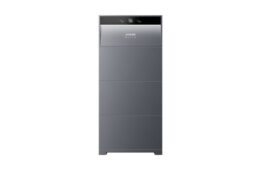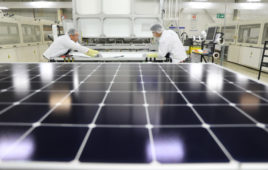Solar Basics is a video series by Solar Power World created to help installers learn about the business, tools and tricks of the solar power trade.
When it comes to solar projects, the main goal is producing as much energy in as little space as possible. In this video, we dive into the world of high-efficiency solar panels and learn about the scenarios where they really shine. Based on the article: High-efficiency solar panels: What’s the big deal?




Good point on panel efficiency. Early on it was the (Sanyo) HIT panels that had the most efficiency and also the highest cost per panel. Back in 2005 a 200 watt Sanyo HIT panel cost $1,100 per panel retail. When Sanyo’s panel business tanked, they sold the rights to Panasonic who still use the HIT technology. With my first solar PV system using HIT panels, the efficiency was only about 17% at that time, but the HIT technology allows more power capture when it is low light and overcast than similar silicon solar cells, even the Solar world cells claiming 22%.
Two part solar PV cells will be the next big thing. It has been found that Perovskites do have the ability to be “tuned” to specific ranges of the light spectrum. It has also been found that Perovskites can be “printed” over standard solar PV cells to create dual harvest regions of the light spectrum, increasing power yield to the 30% plus capture region.
The solar PV residential game has changed dramatically since the late 1990’s to early 2000’s. Even with tariffs on some panels, the panels put out more power per square foot now than they did just 15 years ago. The cost per watt has dropped from around $5.50 per watt to around $1.00 per watt and even a little less than $1.00 per watt when panels are bought in pallet quantities. Energy storage is coming down in price per watt and it has been predicted that by 2025 the cost of a storage battery will be around the $100 per kWh of storage price. Over building one’s home or business solar PV system and installing a 40kWh storage system would go a long way to making almost all of the energy required by one’s home or business, an overhead cost that can be eliminated will make future budget decisions easier to implement.